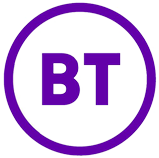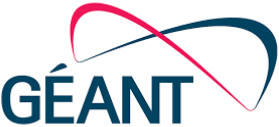What is PON and How do you Manage your GPON Investments to Maximize Efficiency and Returns?
Trusted by:


















Passive Optical Networks (or PON) are essential tools when it comes to maximizing fiber coverage and reaching the last mile. Given that deploying fiber optic broadband can be expensive, it’s critical to get it right. Not only do you need to plan effectively, but you also need to make sure you can manage and operate new fiber deployments, alongside your existing infrastructure and assets. But how do you manage your PON or GPON investments? What tools do you need? And how can you maximize efficiency and returns on your PON investments? Many operators are now turning to advanced telecom inventory management solutions—such as VC4’s Service2Create (S2C)—to maximize efficiency and returns on their investments.
What is a Passive Optical Network, or PON?
Are you investing, or planning on investing, in passive optical networks? We’ll help you get a comprehensive view and understanding of what it is, and what it can mean to you. So what is a passive optical network to begin with? Well, it’s the key to the last mile. PON simply stands for “Passive Optical Network”. This means that, essentially, no power is required to drive delivery of the connectivity to the end user site, simplifying deployment and driving down costs, so that fiber providers can reach more premises. While PON may be deployed in other network domains, it’s primarily used for the last mile of Fiber to the Home (FTTH) connectivity and for connecting buildings or mobile sites.

What is the difference between PON, GPON, APON, EPON and XG-PON?
While the term “PON” is generalized, Passive Optical Networks come in a variety of incarnations. Foremost among them are GPON, APON, EPON and 10G-PON (XG-PON). It’s worth taking a moment to distinguish between them.
- GPON (Gigabit PON) is currently the most common version of PON. It uses one wavelength for downstream traffic (and another for upstream traffic).
- APON (ATM Passive Optical Network) is based on ATM (Asynchronous Transfer Mode) and again provides 622 different speeds using different bandwidths for upstream and downstream transmission.
- EPON is Ethernet Passive Network, also known as GEPON (Gigabit Ethernet Passive Network). This uses a single Layer 2 IP network to carry data, voice and video. Generally, it’s more cost effective than GPON.
- 10G-PON, which comes in several forms – XG-PON, supporting next generation ultra-fast 10-Gigabit rates, with asymmetric performance (Max downstream line rate – 9.953 Gbit/s, max upstream 2.488 Gbit/s; and XGS-PON, a symmetric 10G-capable interface, with a maximum downstream / upstream rate of 9.953 Gbit/s
What effect does PON have on your customer experience?
For operators, PON technology, inherently cost-effective, uses a single fiber strand over the “last mile” to deliver services to multiple end-users, thereby reducing both the infrastructure and material costs of traditional active, point-to-point systems. The operator’s customers benefit too in a variety of ways, mainly related to improving their end-user experience. And, in the battle to win and retain customers, experience has become a critical weapon to wield. If you would like to know more about how you can use PON to improve your customer experience, please read our blog ‘What is PON and 7 ways it can improve your customer service’.
Ready to deploy Passive Optical Networks? Find out why effective registration is essential
GPON technology is increasingly popular as operators seek to leverage the cost and performance benefits it affords. However, adding a new component to the legacy network mosaic isn’t entirely straightforward. There are network planning and inventory challenges to overcome – and accurate, effective registration is key.
While (GPON) technology is a cost-effective option for network operators seeking to bring Fiber to the Home (FTTH) by covering the “last mile” with a single strand that delivers high Internet speeds to multiple end users, making the technology work in practice is challenging. That’s mainly because there are more component parts within the GPON network’s jigsaw puzzle and that means more to register correctly and more to track at the outset. This makes network inventory registration far more demanding. Yet getting it right is often overlooked. Find out how you can go from jigsaw puzzle to a unified view in our blog ‘Why is effective registration essential when deploying GPON?’
GPON and Fiber to the Home (FTTH), what usually goes wrong and how you can prevent it
As stated above: while PON may be deployed in other network domains, it’s primarily used for the last mile of Fiber to the Home (FTTH) connectivity and for connecting buildings or mobile sites. Here the biggest problem with FTTH rollout is GPON Network inventory management. However, these problems can be fixed with the right inventory management tool. You can read more about this in our blog ‘The biggest problem with FTTH rollout is GPON Network inventory management- here’s how you can fix it.’ Not sure what problems you might encounter? Here are 5 common mistakes you might make with FTTH network inventory registration.
GPON as part of a bigger picture: can telecoms inventory data provide fuel for big data analysis programs?
New services bring new possibilities, resulting in an increasingly diverse portfolio that can be delivered between research partners, or even to specific teams in different sites. These must be provisioned and assured correctly. And, the services delivered end-to-end may traverse a series of interconnecting paths – nationally leased dark fiber, as well as international leased lines. If you establish a new project, or forge a new relationship, you need these services and the connectivity they require to be allocated, dynamically – and to be accounted for. Wish to learn more about how new services like GPON, FTTH and leased line operations for instance? Read our blog ‘’Can telecoms inventory data provide fuel for big data analysis programs?’
What does the future for telecoms operators look like? We can’t be certain, but whatever the correct answer turns out to be, it will likely be found in the analysis of the sea of big data being accumulated across the industry. Leveraged correctly, big data analysis and the elements that make up the telecoms inventory are set to become a game-changing combination. Telecoms inventory data should be at the heart of any such analysis program.
When you change network and service tech, you can’t lose sight of the big picture – consistency matters, so that national and international research networks can deliver to their users. Effective inventory management is critical to delivering agile services across complex, multi-site networks. Read more about it in our blog ‘Ensuring consistent, accurate network inventory management for NRENs’.
Managing your GPON investments and scattered data with the right tools
For those who’d like to learn more, we’d recommend downloading VC4’s comprehensive Guide to managing PON investments to maximize efficiency and returns. The guide provides a detailed understanding of the specific requirements within each category, and there are many.
For every operator working on the last mile, bringing fiber to the home and using GPON solutions, the right inventory management tool is of the utmost importance. VC4 Service2Create is a complete, intelligent inventory management system that brings data together, eliminating silos and providing a consolidated record of your network assets – physical, virtual, logical, and service – giving you clarity and supporting operational automation and transformation. It is compatible with every generation of technology you adopt – and supports a unique reconciliation process, so that it is automatically updated – providing the flexibility you need to meet the demands of your customers. In other words, it boosts your capability to deliver high-performance networks to researchers – nationally and internationally.
FAQs
1. How does GPON differ from other PON variants like EPON or 10G-PON?
GPON (Gigabit PON) is one of the most used PON technologies, offering a balanced mix of high capacity and cost efficiency. EPON, which uses Ethernet protocols, can be more cost-effective in certain scenarios. Meanwhile, 10G-PON variants such as XG-PON and XGS-PON provide ultra-fast speeds with either asymmetric or symmetric performance. The choice depends on your network’s specific performance and budget requirements
2. Why is managing GPON investments effectively so important?
Deploying a fiber network is a significant financial investment. Effective management of GPON investments ensures that you accurately track all network assets—from physical hardware to service elements—and can automate updates to maintain data integrity. This careful oversight helps maximize operational efficiency and ultimately boosts the returns on your fiber network deployment.
3. How can modern tools like Service2Create (S2C) help in managing telecom networks?
Modern platforms such as VC4’s Service2Create (S2C) offer cloud-based, low-code/no-code solutions that streamline telecom inventory management. By consolidating data from various sources and eliminating silos, these tools provide a unified view of your network assets. This enables operators to automate updates, improve network asset tracking, and ensure seamless integration of new fiber deployments with existing infrastructure.
Ready to take your network performance to the next level?
Discover how advanced GPON management and streamlined telecom inventory tools like Service2Create (S2C) can help you maximize efficiency and returns. Contact us or request a demo today to see how simple managing your fiber deployments can be.



